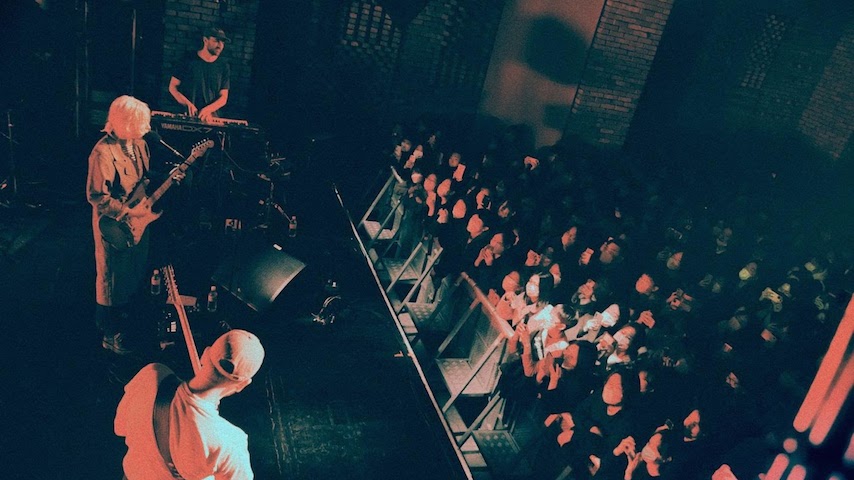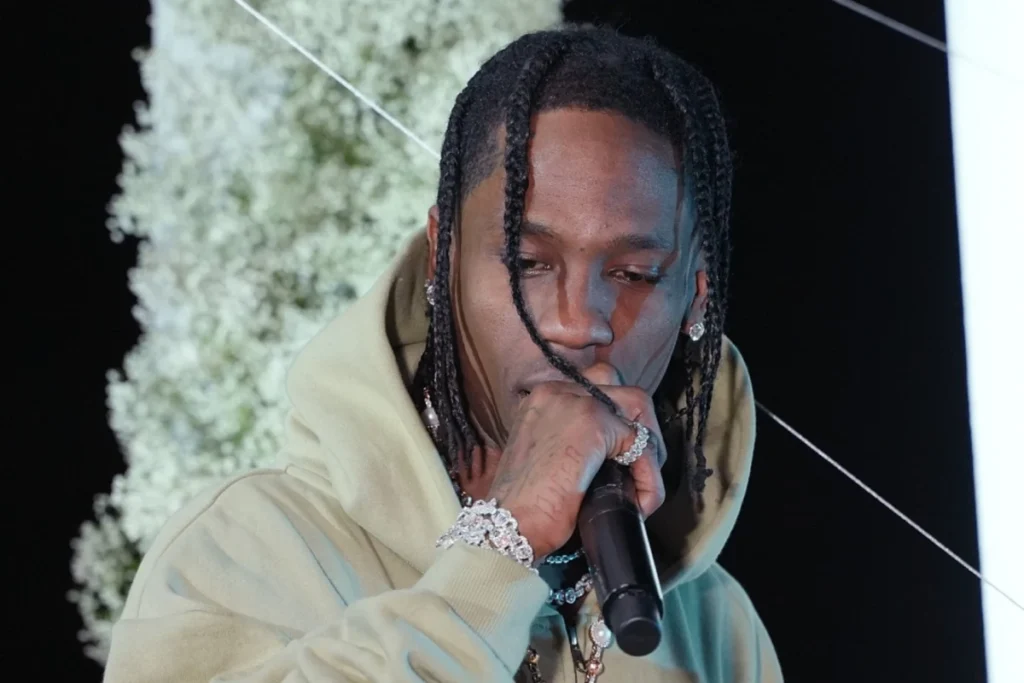Before the coronavirus outbreak, on any given night in Seoul, South Korea, you could head to Hongdae to catch a show. Most of the city’s music venues are located there, with small, underground clubs on almost every corner, sometimes tightly packed or other times only sparsely filled, with music fans of all kinds. They buzz excitedly in groups after work ends on “burning Friday” (a less cheesy “TGIF”) or coolly sip drinks alone in the back. Beer is mixed with clear soju liquor for expediency. You can find artists like Kirara twisting knobs to dance bangers inspired by video games, Jambinai reimagining post-rock with traditional Korean instruments and punk band Drinking Boys and Girls Choir ripping through songs like “National Police Shit.”
But these days, in lieu of sticky floors and deafening sound systems, Korean indie fans tune in to YouTube on Tuesday and Thursday nights to watch live performances. Alone in their bedrooms or alongside a couple friends, they peer into their laptop screens. Sessions begin with an intro featuring homemade puppets—one resembling a mouse, another a human-shaped red blob and the third a person with wacky red hair—who bop around for a few minutes before delivering a brief uplifting monologue (their current spiel mourns the world’s rampant racism) and shouting the name of the show. The footage fades into a shot of a studio, and the magic begins. A Korean woman with curly green hair holds a pose in perfect stillness before her band erupts into a quirky pop song. Cameras show a close-up of her bejeweled synthesizer, a wide shot of the guitarist bouncing in place and chunky vintage TVs scattered around the set displaying the band’s logo.
This semi-weekly live stream, titled “Show Must Go On,” is broadcast live out of Senggi Studio in Seoul. Senggi is a music venue-studio hybrid that used to host concerts, music events and video shoots. Despite the pandemic, music venues in Seoul never faced strict regulations—until recently. All businesses continued to operate normally, citizens dutifully wore masks and Korea became a shining example of coronavirus preparedness in western news outlets. But a few weeks ago, the government’s newly designed four-tier system for coronavirus precautions was upgraded to level two-and-a-half, and Hongdae’s indie venues, even ones that could only host audiences of 20 people, were forced to shutter temporarily. Now, the “Show Must Go On” streamed shows are some of the only concerts in the entire city.
“When the coronavirus first started to spread, there weren’t many streaming performances being held,” explains the Senggi Studio “chang,” or boss and operator Jooyoung Jung. “Even now, most are filmed and edited in advance so artists and audience members can’t interact with one another. I wanted to create a streaming performance that felt more real, so I started ‘Show Must Go On.’”
His dream for the studio when it opened almost two years ago (anniversary celebrations were canceled this year) was to “introduce the best of Korean music to foreign countries, and introduce great music from abroad to Korean music lovers.” But now, his dreams have been forced to take a new form, as only 10 audience members are allowed at each concert and bringing in international artists is all but impossible.
These days, the information of live concert attendees, provided through individualized QR codes scanned at the door, must be collected in case of an outbreak. Jooyoung smiles as he squirts hand sanitizer into the hands of masked fans, who have come to see the idiosyncratic indie-pop diva Hyangni for tonight’s broadcast. Though times have never been tougher for venue owners and musicians alike, he’s determined to prove that music has no borders, and to promote underground music from Korea that most foreigners have never heard before.
Elsewhere in Seoul, Patrick Connor, manager of Korean indie-pop duo Wedance, hosted a socially distanced gig on Aug. 1. With a reduced audience of 200 people, the band went ahead with their previously planned album release party at a warehouse in the eastern part of the city.
“We received a grant to do this show, quite early on in the year,” Connor said. “The plan was to hold as big of a show as we could, using the grant to supply full production, spend good money on marketing and make it a big deal. About a month after, the pandemic really hit and social distancing regulations meant we could only get about 200 people when we had hoped to host 600-800.”
With temperature checks at the door, QR code registration and two rounds of venue disinfection, the show was able to take place. Squares with the band’s logo were placed on the floor, one meter apart, for audience members to stand on, and security guards made sure proper distance was maintained. A few individual trampolines even lined the perimeter, allowing for slightly freer socially distanced motion. Wedance played two sets—one with a full band and one with the duo performing alone—of their own peculiar but delightful brand of fuzzy, guitar-driven pop. The band’s performance was both comforting and emboldening. A few fans danced wildly in place, arms flailing and hips twisting while their feet stayed firmly planted on their designated spots. Overall, the show was a success, but the model likely isn’t sustainable for other indie artists.
“If we hadn’t had the grant, we would have lost amazing amounts of money,” Connor said. “We would have needed to sell 400 tickets just to cover our costs, and when we were limited to 200, we would have already lost 50% of our investment even with a sellout.” As an experienced promoter in Korea with his promotion company Highjinx, Connor has facilitated the entry and performance of dozens of foreign bands, mostly from his home country, the U.K. However, every solution he has encountered to get around the pandemic seems to have its own problems. There’s some talk about “travel corridors” among virus-controlled countries, week-long residencies following quarantine periods and tours where artists perform three smaller shows per day instead of one big show.
“Korea’s above-average handling of the virus could prevent international artists from coming for quite a while,” Connor said. “The quarantine rules won’t be going away anytime soon, and no artist can afford to quarantine for two weeks before playing a show, even at full capacity.”
Though the option isn’t available to all artists, K-pop groups such as Twice and Monsta-X have hosted ticketed livestreams—fully produced events lasting two hours or more—for fans around the world who will tune in at practically any hour to watch their favorite bands perform. Tickets are much cheaper than normal, at around $30 USD, but many more tickets can be sold for a single performance. In July, famed K-pop group BTS set a world record when 756,000 fans bought tickets and tuned in live, about 50 times the capacity of a typical arena concert. As Connor points out, the hardships created by coronavirus hit indie musicians exponentially harder than well-established acts.
“If you’re already doing really well as an artist then you’ll probably be fine,” he says. “But if you’re trying to build a fanbase, now it’s even harder. Ultimately, being in Korea, you can put on a show, but you can’t really make any money. The government grants help us to still do something, which is great, but it’s not like they’re handing out grants to easily support music companies or artists who are struggling.”
With no end to the global pandemic in sight, hybrid livestream concerts will likely be the way forward, even in countries like Korea who made swift progress in keeping the outbreak to a minimum. Until a vaccine becomes available, music fans in Korea will have to embrace their local scene by sticking to small clubs, tuning in to programs like “Show Must Go On” and hoping for the best.
Originally from the U.S. and now based in Seoul, Abi Raymaker has written music features and provided photographs for sites such as tmrw magazine, Baeble and Paste. Her photography is online here.




